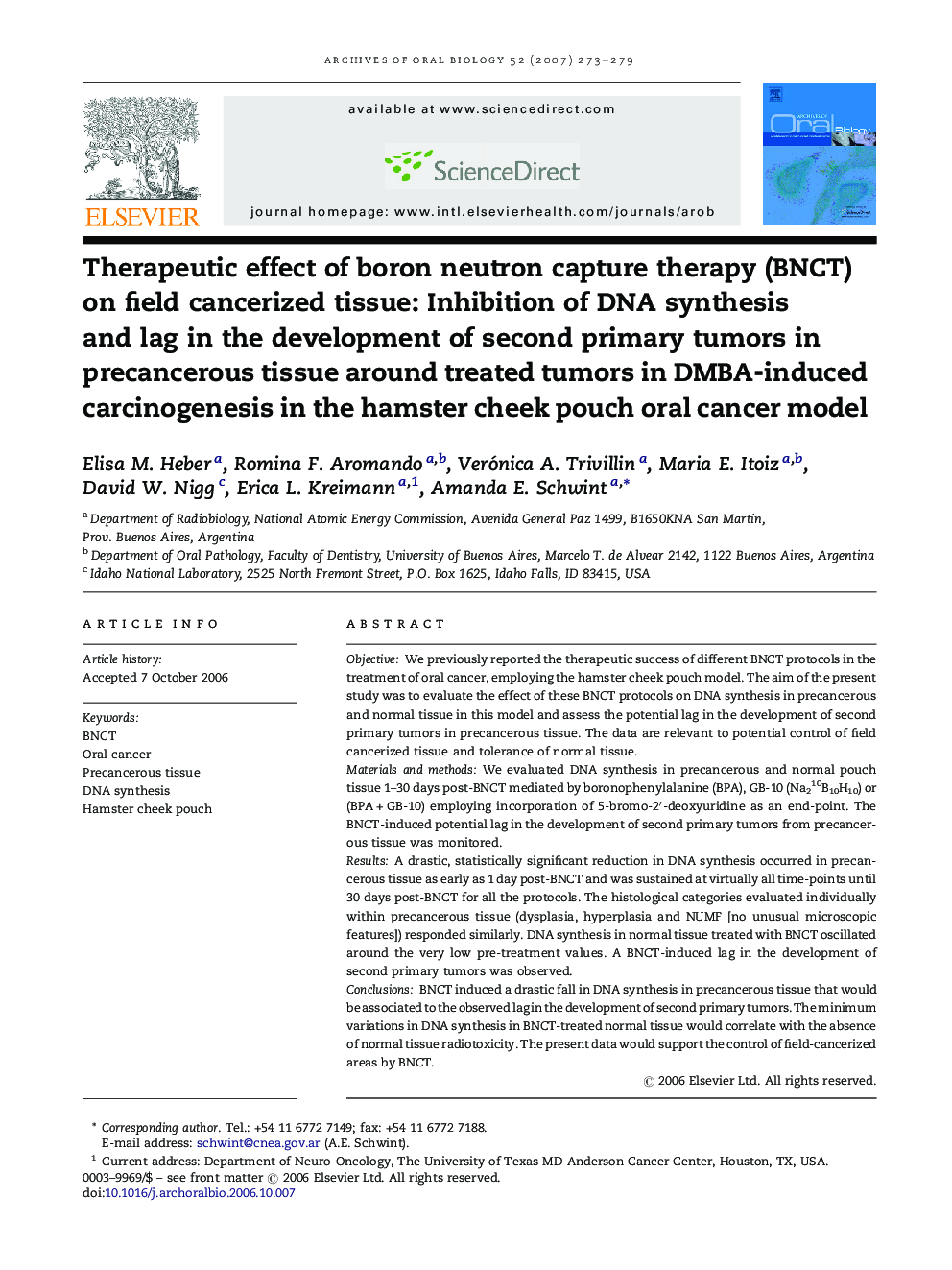| Article ID | Journal | Published Year | Pages | File Type |
|---|---|---|---|---|
| 3121292 | Archives of Oral Biology | 2007 | 7 Pages |
ObjectiveWe previously reported the therapeutic success of different BNCT protocols in the treatment of oral cancer, employing the hamster cheek pouch model. The aim of the present study was to evaluate the effect of these BNCT protocols on DNA synthesis in precancerous and normal tissue in this model and assess the potential lag in the development of second primary tumors in precancerous tissue. The data are relevant to potential control of field cancerized tissue and tolerance of normal tissue.Materials and methodsWe evaluated DNA synthesis in precancerous and normal pouch tissue 1–30 days post-BNCT mediated by boronophenylalanine (BPA), GB-10 (Na210B10H10) or (BPA + GB-10) employing incorporation of 5-bromo-2′-deoxyuridine as an end-point. The BNCT-induced potential lag in the development of second primary tumors from precancerous tissue was monitored.ResultsA drastic, statistically significant reduction in DNA synthesis occurred in precancerous tissue as early as 1 day post-BNCT and was sustained at virtually all time-points until 30 days post-BNCT for all the protocols. The histological categories evaluated individually within precancerous tissue (dysplasia, hyperplasia and NUMF [no unusual microscopic features]) responded similarly. DNA synthesis in normal tissue treated with BNCT oscillated around the very low pre-treatment values. A BNCT-induced lag in the development of second primary tumors was observed.ConclusionsBNCT induced a drastic fall in DNA synthesis in precancerous tissue that would be associated to the observed lag in the development of second primary tumors. The minimum variations in DNA synthesis in BNCT-treated normal tissue would correlate with the absence of normal tissue radiotoxicity. The present data would support the control of field-cancerized areas by BNCT.
